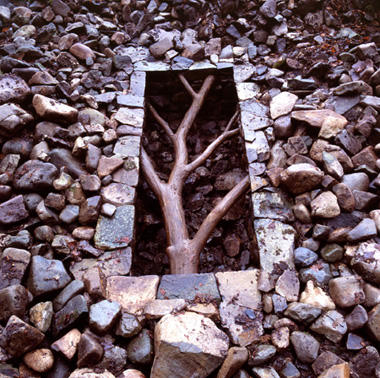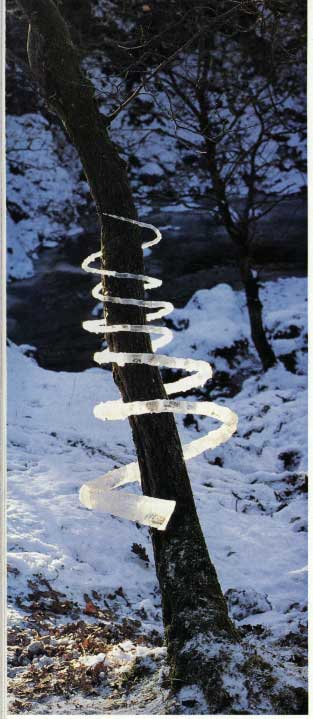To illustrate hierarchy, I plan to use human relationships as shown through gesture and body language. With the pictures I intend to destroy the traditional thought of hierarchy as all encompassing levels of importance and show it as the intricate micro-relationships that actually make up society.

This first image is a Henri Cartier-Bresson shot. It is easy to assume this is a grandfather-granddaughter relationship because of the protective way the man surrounds her. The direct eye contact and crossed legs show a confidence bordering defiance directed towards the photographer. Doubtless this is brought on be the presence of the man whose hands and legs surrounds the child. Heretically, the man is more important; he is older, wiser, part of the work force, probably the main provider for the family; however the photograph shows him as protective and comforting. These are the type of relationships I want to use to show human hierarch. Though I do not intend to stage my photographs or even allow my subjects to know they are being shot, the photograph still shows the type of relationships I want to portray.

Here, the photographer, Lev Tsimring, captured a far more subtle hierarchy. The relation is between three supposed siblings as the two eldest teach the smallest child to ride a bike. The tallest of the three wraps his arm around the child on the bike as though lifting him up to take him off the bike which is too large, probably a possession of the older boy. There is a clear hierarchy between the three, but the way they are helping each other shows how social relations are used to support and help people.

Handshake by Laurent Roch shows clear hierarchy. The seated verse the standing, the way the man on the left stoops over to sake the other man’s hand, the embroidered hat and the uncovered head, all of these contribute to the feeling that these two are at different social levels. Despite this, the image catches the moment of meeting. In this introduction, their faces show genuine surprise and pleasure at the union, complicating the hierarchy of the positions. It seems to lead to a moment where the seated man stands up to greet the other, symbolically a removal of the previous hierarchy.

Though this picture is about the juxtaposition of the food add and the family Julian Legrand captures the relationships without the conventional use of faces and heads. The relation of the three is made clear by simple body language. The largest figure is probably the father; his wife is to the left and a son with his hand over the man’s shoulder. The lack of heads in this shot is what really draws me to it; this is a technique I may try with my own pictures to focus on the way people orient themselves around each other.
Another Lev Tsimring, this picture is a very comical take on the idea of hierarchy. The expensive looking sweat pants, the loose baggy jeans, and then the canine. It is an easy line up to see hierarchy in an amusing light. As with the last image, the photographer chose to crop out the heads of the people, focusing in on the symbolism of the way the figures are clothed (or otherwise).
The idea of hierarchy is often characterized by a conflict or struggle that establishes that hierarchy. This picture by Richard Ford shows a checkers game by tow people who seem appear to be foils. They are close enough in age that they appear to be well matched competitors. However, they are opposite in build and dress. Their respective dark and light suits seem to mimic the conflict on the board, personalizing the checkers game.
This photograph by Lukas Vasilikos shows a very clear hierarchy: that of the family. The progression of youngsters surrounded by their parents is mimicked in the sign on the shop window of the human evolution. Though the comparison is comical, the family hierarchy is none the less present. In terms of how it manifests its self visually, the parents are shown walking at the front and back of the procession of kids, shepherding them forward.
The correlation between figures here is made by the shopping bags. The photographer, Michael Penn makes the connection between the child and the two adults in the back ground with the triangle of white plastic grocery bags. These forms seem to hint at the bags that they homeless carry their possessions around in. The child seems to be following the example of the figures before him, carrying around a bag too large for him to lift off the ground while still struggling to move forward.
This is another shot by Richard Ford. In this one he shows a clear progression in line of people as their heads steadily get lower in the frame. Although this arrangement appears to be simply lucky placement, the implication is of some social order that reflects the importance of each person in the group. Besides their position, there is nothing to suggest any form of hierarchy between them. They are all of approximately the same age and appear to be off similar economic background, but the placement of the head is such a symbol of authority that the progression overrides all other symbols in the photograph.
Any form of line implies a hierarchy, some sort of order of significance that being shown the apparently organized position. In this photograph the reason behind the order can only be guessed at. The three standing elderly people appear to be looking down on the seated woman who waits like them next to the street. A fourth figure also looks towards the seated woman; she, however, stands apart from the others, implying a social distance, though not as great as the distance between the three and the figure farthest to the right. The slow shutter speed allows the moving crowd to blur away into the back ground, bringing the visual relation of the four standing figures into sharp focus.


















